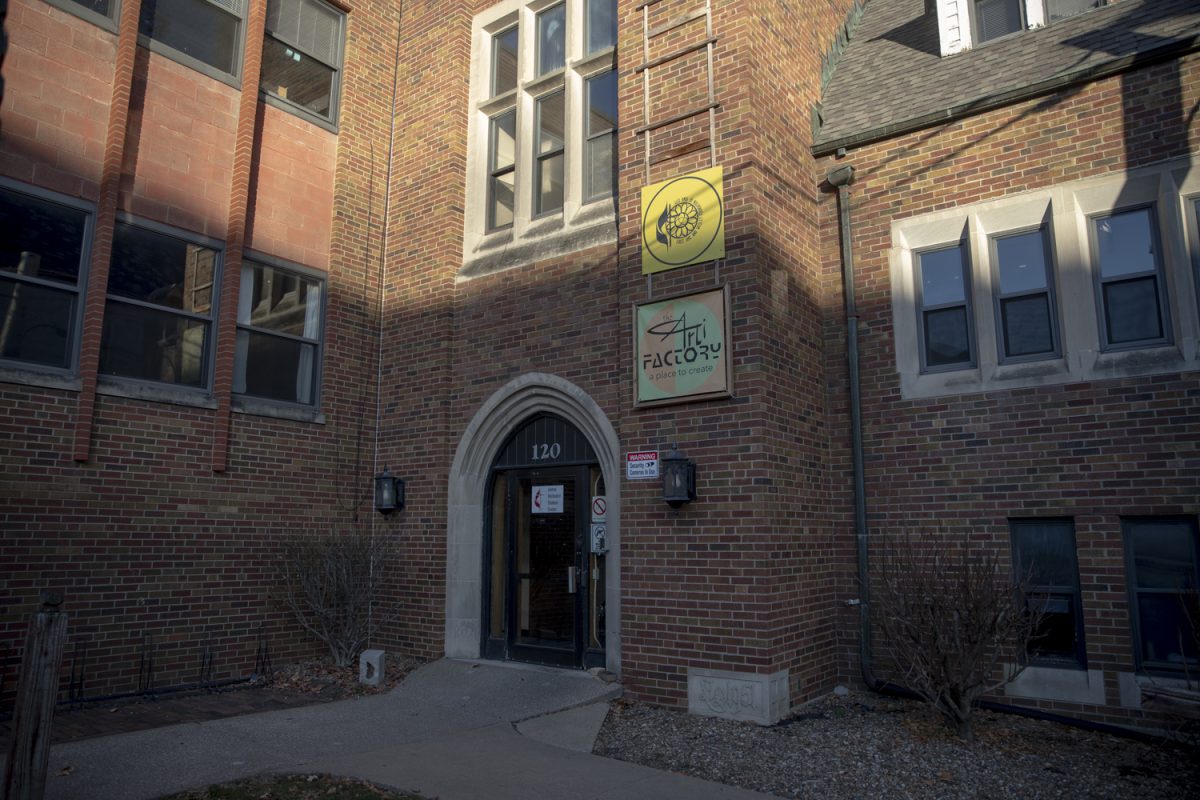Color zings across the expanses of many different fabrics as the Artifactory descends into their second workshop, dipping into the unlikely practice of a unique art form known as hot stamped foiling.
Invented by University of Iowa professor Virginia Myers, the craft consists of the application of metallic or pigmented foils to various surfaces. Though she died in 2015, her method lives on.
After Myers’ passing, her former assistant, Deanne Wortman, led the first foiling art sessions alongside painter Robert Richardson.
The two board members had held their classes at the Artifactory, and amongst their students was none other than Foiling art teacher Mei-ling Joiner, who mentioned that her favorite part of the process was seeing more people getting exposed to the technique.
“What amazes me is what students bring to foiling and how it’s so unexpected every time,” Joiner said.
For this session, participants were given two options, which were to sketch or use a stencil on a piece of paper prepped with acrylic polymer liquid medium, which is a kind of paint that helps to grip the foil during its transfer.
This step is crucial to the foiling process, as it provides a stable surface that bonds well with foil under both heat and pressure.
Either way, each participant had free will to create anything they wanted. Mary Blackwood, who came to the Spring 2024 workshop, said her stenciled artworks turned out to be her favorites.
“I tried more than one version since Mei-ling was happy to show us how to do different techniques. Sometimes I used a stencil from a photocopy [and] other times I cut out strips of the foil at random and made abstract patterns,” Blackwood said.
After the initial drawings were sketched onto the polymer-coated paper, everyone was to cut out strips of foil about areas of the sketch that they wanted to be filled in. Once that was done, they were taken to a room where the magic happened, with a roller and a hot plate.
RELATED: ‘HOLD ON/LET GO’ teaches the value of personal effects
The roller is a unique apparatus composed of a rectangular prism-like structure with two handles at its sides. There was a temperature indicator in the middle of it, and the actual roller was attached to its bottom, spanning the length of the structure.
Participants were to cover their artwork with wax paper before carefully putting it on top of the hot plate.
Being careful not to touch the plate, they were guided to grab the roller off its resting place and press it onto their work, making sure to go in a back-and-forth motion to get the foil smoothly transferred onto the polymer. The more layers one put onto the work, the more pigmented it became.
“One really enjoyable aspect is that your results show up quickly, and they aren’t always what you expected, which adds a factor of surprise and delight,” Blackwood said. “To become proficient would take a lot of practice.”
With Virginia Myers’ influence, she was able to keep this rare practice alive in Iowa City. Joiner also mentioned one of her favorite works from Myers, a piece called “Small Forest Fire” from 1986.
“In Iowa, in the fall, farmers burn their fields,” Joiner said. “If you go out into the cornfield you can see these fires that sort of grow in a line, and that was a good idea for a [foiling] project. You have this dark background, but then you have these flames coming out.”
Vibrant pinks and purples twist themselves into each other to create the sky, highlighting the midnight-black trees and rocks. Ash coats the ground, serving as an indicator of the fire that had ravaged the forest.
“I find that I can really concentrate on what is in front of me,” she said. “After attaining a certain level of skill, one can then focus more on artistic creativity.”



